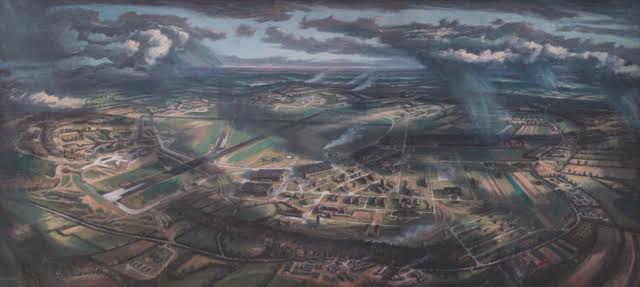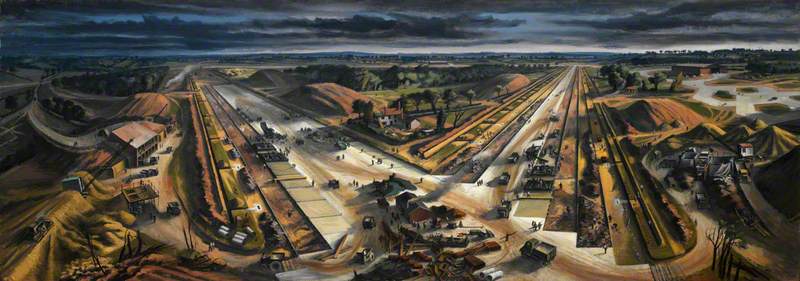
 SOLD
SOLD
Alan Sorrell:
Bradfield Lodge with Nissen hut accommodation, near RAF Bradwell Bay, circa 1942
Unmounted (ref: 3749)
Squared, numbered
Pencil and pen and ink
9 5/8 x 14 3/4 in. (24.5 x 37.5 cm)
Tags: Alan Sorrell ink pen and ink pencil farms/domestic animals landscape Seventy-seven pictures by Alan Sorrell
Provenance: The Artist's Family
During WW2 soldiers were frequently billeted on Country Estates where accommodation was increased via the use of Nissen huts. Twenty-six of Sorrell's first-hand visual records of the daily life in the Air Force were acquired by the War Artists' Advisory Committee.

The house in question is Bradfield Lodge, at Bradfield-on-Sea, Essex, which was bought by Tom Driberg and requisitioned by the RAF as an officers mess in late 1940. The airfield not far away was RAF Bradwell Bay but there is no bay at Bradfield and Driberg wondered if was so named to confuse the enemy (see Francis Wheen, Tom Driberg. His life and indiscretions (1990), pp.141-2. “As the number of squadrons at RAF Bradwell Bay grew, the Officers’ Mess overflowed the confines of Bradwell Lodge. Nissen huts appeared on the lawn, serving as extra dining rooms and kitchens. WAAF quarters and air-raid shelters were built elsewhere in the grounds. Having only just begun to restore order to the house and garden, Tom had to watch the place become an eyesore.”
Sorrell especially took delight in recording the dynamic landforms of the airfields where he was based.
The broad titled viewpoints that resulted from hours of flying would later inform his reconstruction drawings which were often constructed around a birds-eye view.
(detail) Construction of a runway at an Aerodrome, (copyright:The IWM).
As was his practice with mural paintings, Sorrell made sketches and preparatory drawings, which led to the finished reconstruction drawings. These works were commissioned by the Ministry of Works (English, Welsh and Scottish Heritage), The Illustrated London News, television.
When he enrolled in the RAF he refused to work on terrain models of cities he considers of "irreplaceable artistic importance", what he later referred to as his "one man mutiny".
With thanks to Charles Hind for his assistance.


















